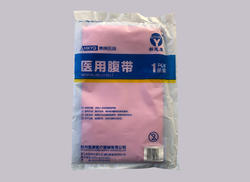The first choice should be based on the concentration and toxicity of the dust. According to GB/T18664 "Selection, Use and Maintenance of Respiratory Protective Equipment", as a half face mask, all dust masks are suitable for environments where the concentration of harmful substances does not exceed 10 times the occupational exposure limit, otherwise a full face mask or protection level should be used Higher respirators.
1. Lightweight, comfortable, odorless, free of glass fiber, non-irritating to the skin, waterproof.
2. Soft and comfortable adjustable nose bridge clip 3. Small breathing resistance, hygienic to wear. Absorb aerosol, dust, fumigation, mist droplets, poisonous gas and poisonous vapor through the filter material to prevent them from being inhaled.
Other features:
1. Filtration efficiency: Under the specified conditions, the protective product filters out the particulate matter in the air;
2. Flame retardant performance: the protective product prevents itself from being ignited, flammable and flame retardant;
3. Disinfection: use physical or chemical methods to kill or remove pathogenic microorganisms on the transmission medium to make them harmless;
4. Sterilization: kill all microorganisms on the transmission medium by physical or chemical methods to make them sterile;
5. It can achieve the effect of dustproof.

There are many types of medical masks. Common medical masks are non-woven masks, gauze masks, and special anti-virus masks.
1. Non-woven masks, with more than three layers, can isolate bacteria and dust, and are safe and reliable to use without the risk of secondary infection.
2. Gauze masks are the type of masks that have been used all the time. Gauze masks are widely used in the field of medical care and scientific research.
3. Anti-virus masks are mainly made of special materials with a filter layer in the middle. Generally, the filter layer is made of activated carbon felt or meltblown cloth. It has the effect of sterilization and sterilization.
According to performance characteristics and scope of application, medical masks can be divided into: medical protective masks, medical surgical masks, and general medical masks.
1. Medical protective masks meet the GB19083-2003 "Technical Requirements for Medical Protective Masks" standard. Important technical indicators include non-oily particle filtration efficiency and airflow resistance:
(1) Filtration efficiency: Under the condition of air flow (85±2) L/min, the filtration efficiency of sodium chloride aerosol with aerodynamic median diameter (0.24±0.06) μm is not less than 95%, which is in line with N95 (or FFP2) and above. (2) Inhalation resistance: Under the above flow conditions, the inhalation resistance does not exceed 343.2Pa (35mmH2O).
2. Medical surgical mask comply with the YY 0469-2004 "Technical Requirements for Medical Surgical Masks" standard. Important technical indicators include filtration efficiency, bacterial filtration efficiency and respiratory resistance:
(1) Filtration efficiency: under the condition of air flow (30±2) L/min, the filtration efficiency of sodium chloride aerosol with aerodynamic median diameter (0.24±0.06) μm is not less than 30%;
(2) Bacterial filtration efficiency: under the specified conditions, the filtration efficiency of Staphylococcus aureus aerosol with an average particle diameter of (3±0.3) μm is not less than 95%;
(3) Respiratory resistance: Under the condition of filtration efficiency and flow rate, the inspiratory resistance does not exceed 49Pa, and the expiratory resistance does not exceed 29.4Pa.
3. Ordinary medical masks comply with the relevant registered product standards (YZB), generally lack the filtration efficiency requirements for particles and bacteria, or the filtration efficiency requirements for particles and bacteria are lower than medical surgical masks and medical protective masks.















